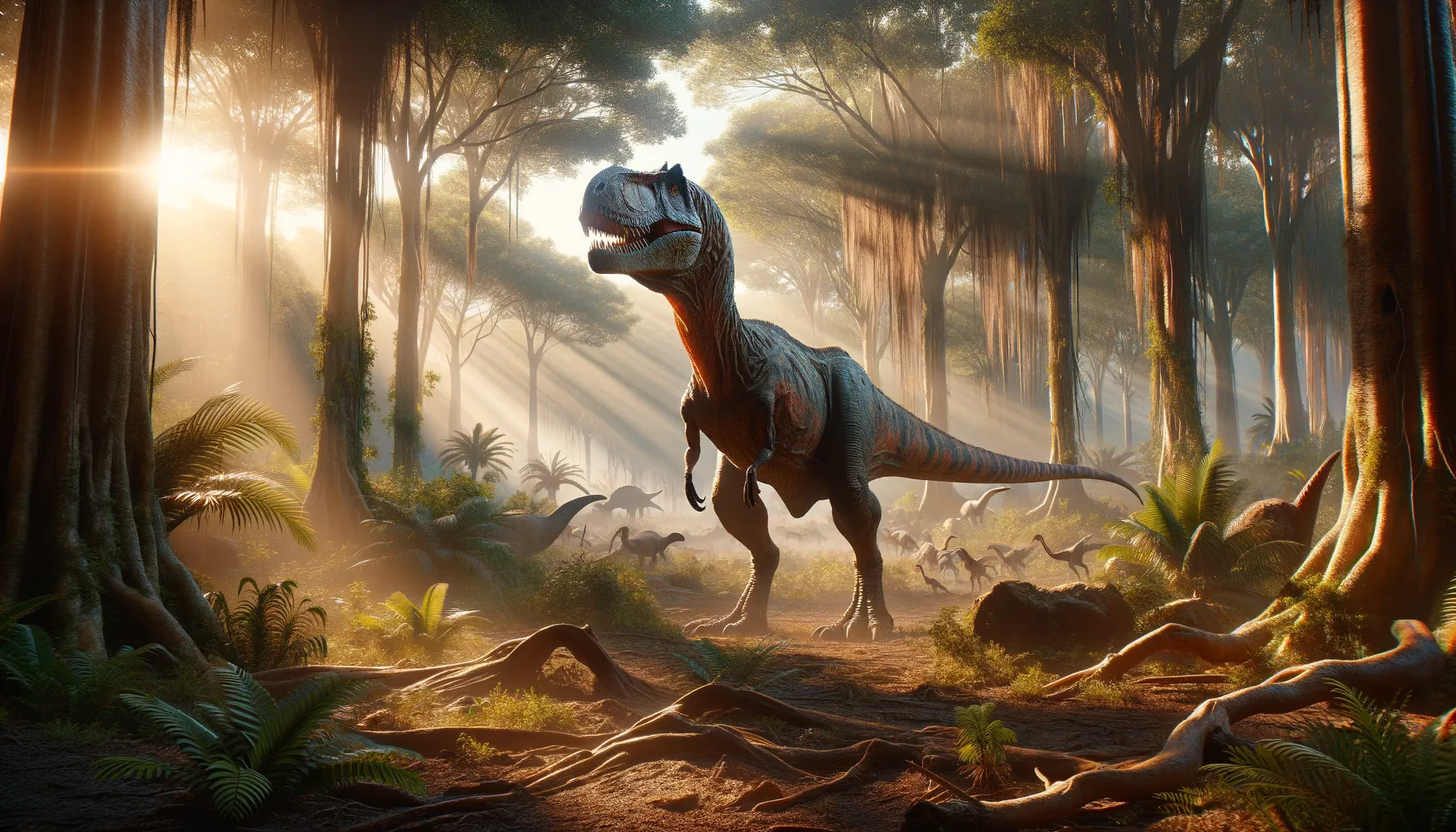
Dahalokely
A glimpse into Madagascar's ancient predators.
Period
Cretaceous
Length
Estimated to be around 12 to 15 feet long.
Height
Approximately 6 to 8 feet tall at the hip.
Weight
Roughly 800 to 1,000 pounds.
Dahalokely was a theropod dinosaur that roamed Madagascar around 90 million years ago during the Late Cretaceous period. Known primarily from partial skeletal remains, it provides important insights into the diversity and evolution of predatory dinosaurs in that region. With its moderate size and distinctive features, Dahalokely played a critical role in its ecosystem, offering clues to the evolutionary history of theropods in Gondwana.
Diet
Dahalokely was carnivorous, preying on smaller vertebrates of its time. Its diet likely included smaller dinosaurs and other terrestrial prey, showcasing its role as a mid-level predator.
Hunting
It hunted using its keen senses and moderate agility to ambush prey. Its hunting strategy would have involved short bursts of speed to catch unsuspecting prey in its environment.
Environmental challenges
Dahalokely lived in a region undergoing significant geologic and climatic changes. The fragmentation of Gondwana influenced its habitat, leading to isolated ecosystems. These changes likely impacted the availability of prey and required Dahalokely to adapt to varying conditions. Competition from other predators in the region was also a challenge, influencing its evolutionary path.
Speed
Moderate, similar to other mid-sized theropods.
Lifespan
Estimated to be around 20 to 30 years.
First discovery
Discovered in Madagascar in 2007.
Fun Facts
- Dahalokely lived about 90 million years ago during the Late Cretaceous period.
- It was discovered in Madagascar, an island known for its unique wildlife.
- The name 'Dahalokely' means 'small thief' in the Malagasy language.
- Dahalokely was a relatively small dinosaur, reaching about 10 to 13 feet in length.
- It is believed to have been a carnivore, likely preying on smaller animals.
- Dahalokely is important for understanding the evolutionary history of abelisaurids, a group of predatory dinosaurs.
- The fossils of Dahalokely were first described in 2013, making it a relatively recent discovery.
Growth and Development
Growth rates in Dahalokely would have been similar to other theropods, with rapid growth during juvenile stages slowing as it reached maturity. Its development would have been influenced by the availability of prey and environmental conditions. Such growth patterns ensured it could reach reproductive age despite predation pressure.
Habitat
Dahalokely inhabited forested areas in Madagascar, benefiting from dense vegetation that provided both cover and hunting opportunities. These forests were part of a diverse ecosystem with a mix of rivers and plains. The region's climate was likely warm and humid, supporting a rich variety of plants and animals.
Interaction with other species
As a mid-sized predator, Dahalokely interacted with both prey and larger predators. It likely competed with other theropods and even ancient crocodyliforms for food resources. Its environmental niche necessitated careful interactions to avoid conflict and ensure access to vital resources.
Natural lifespan
Its natural lifespan was around 20 to 30 years.
Reproduction
Dahalokely likely reproduced by laying eggs in nests, common among theropods. Parental care might have been minimal, with offspring needing to fend for themselves soon after hatching. Such reproductive strategies ensured a higher chance of survival for a few young reaching adulthood.
Social behaviour
Like many theropods, Dahalokely might have been a solitary hunter, but it could have engaged in social interactions during mating seasons. Some theorize small groups might have formed to exploit specific hunting opportunities.
Fossil locations
Dahalokely fossils have predominantly been found in Madagascar, highlighting its significance in understanding regional paleoecology. The discoveries in this area are crucial for studying insular evolution and biogeography during the Late Cretaceous.
